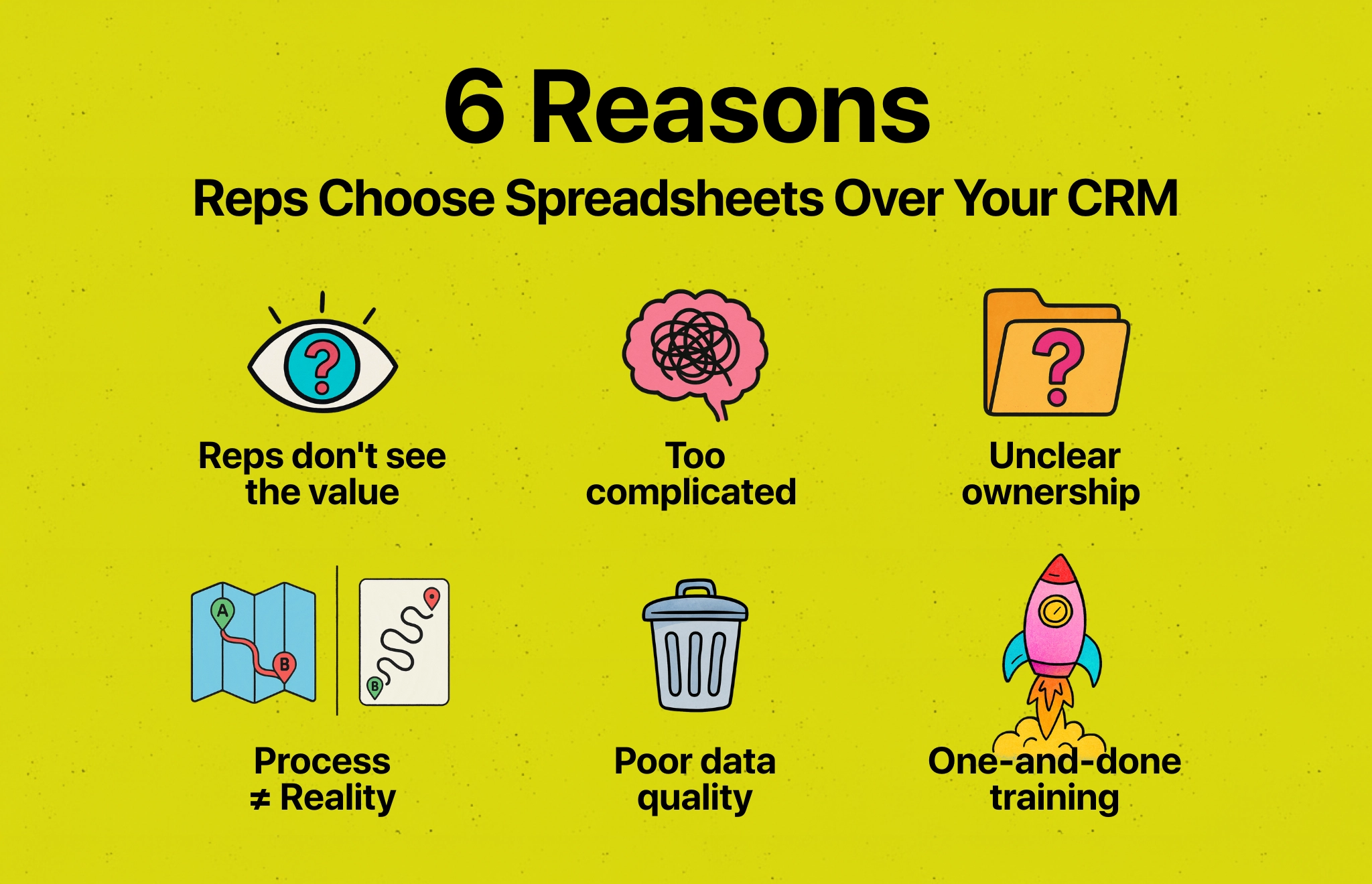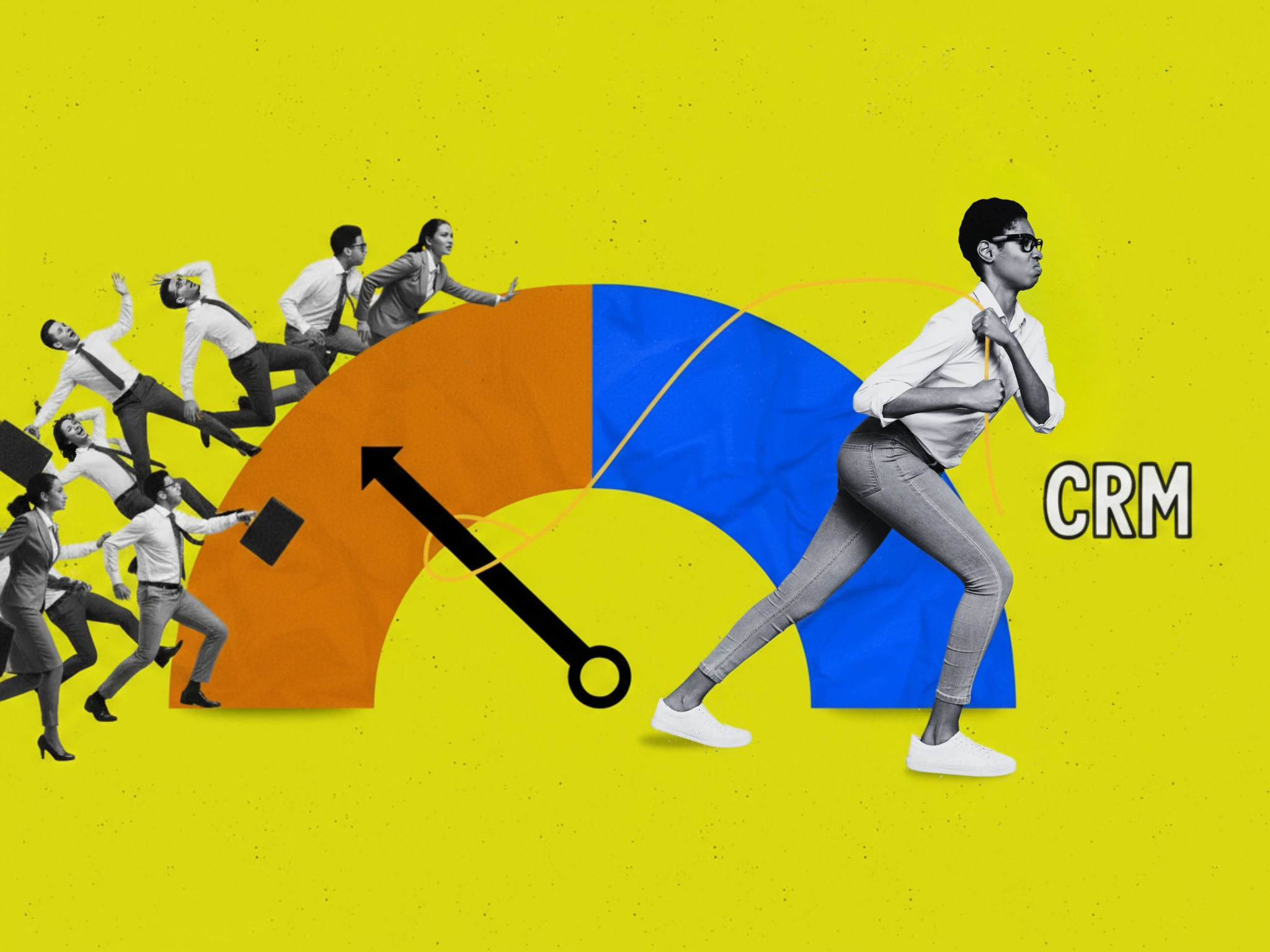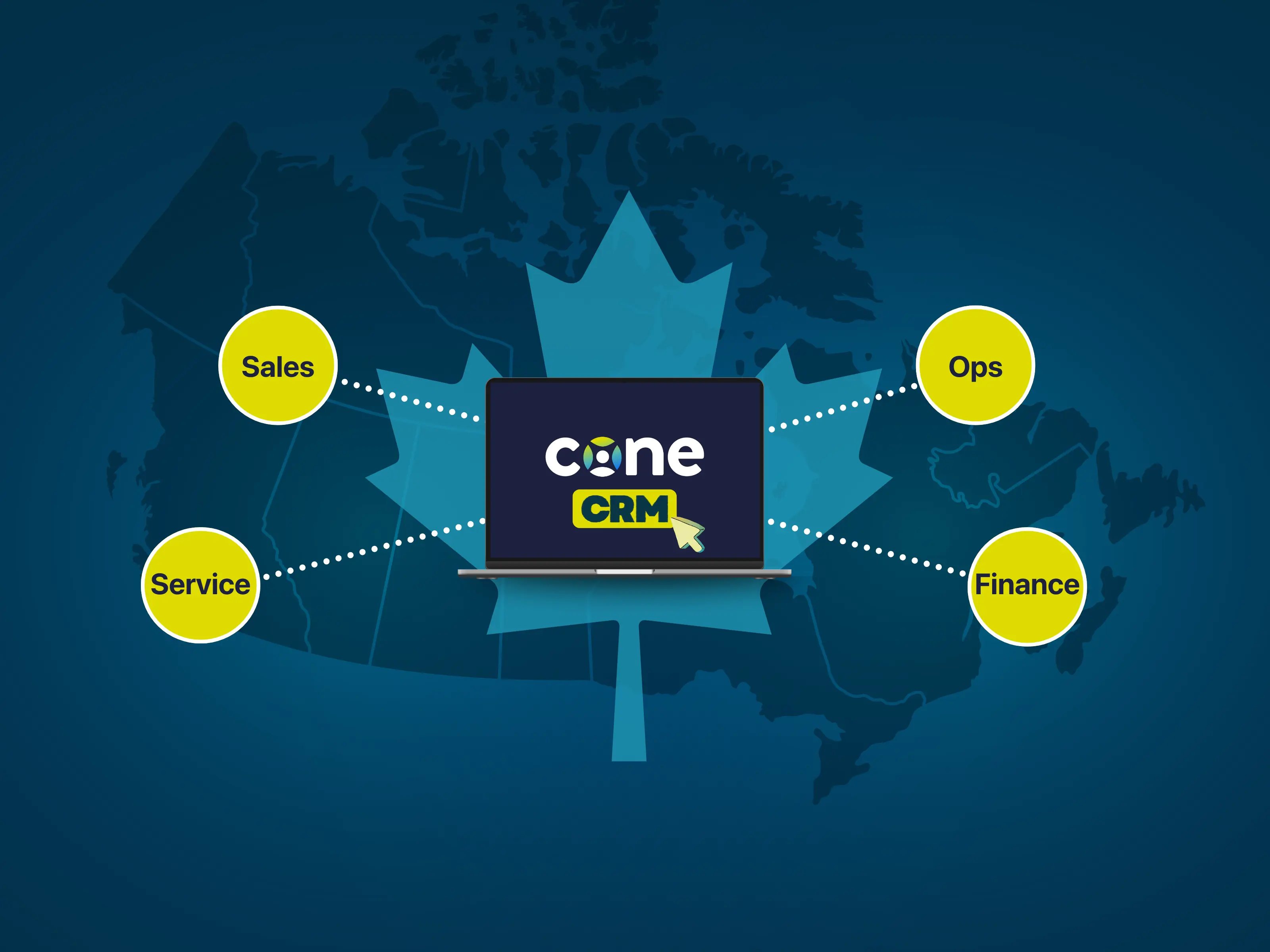How to Get Salespeople to Actually Use Your CRM (Without Eyerolls)
Let’s be real: salespeople are hustlers, not note-takers. They’d rather close a deal than update a pipeline stage. Traditional CRMs often feel like a box-ticking exercise that helps management, but doesn’t help the rep.
And the data backs it up: despite billions spent on CRM systems, adoption rates remain painfully low. When salespeople don’t use the tool, forecasts are wrong, leads slip through the cracks, and suddenly leadership is asking, “Why did we even buy this thing?”
6 Reasons Reps Would Rather Wrestle a Spreadsheet
1. Sales Teams Don’t See the Value
If the CRM doesn’t help a salesperson close more deals or save time, it’s admin work.
2. The Process Doesn’t Match Reality
If the sales stages look like they were invented in a boardroom, reps will ignore them or invent their own “creative” workarounds.
3. It’s just too complicated
If your CRM makes a rep feel like they need a pilot’s license, don’t be surprised when they taxi back to Excel.
4. Poor data quality
Duplicate records, missing contact details, and scattered notes across email and spreadsheets make the CRM unreliable. If the CRM is “garbage in, garbage out,” no one trusts it.
5. No ownership
When no one is responsible for data quality, fields get skipped, deals get stuck, and the CRM becomes a graveyard of half-finished records.
6. Training is treated as a kickoff instead of a journey
A single kickoff workshop doesn’t cut it. Reps need ongoing nudges, contextual lessons, and support in real time.

The Real Root Cause: Adoption is About Humans, Not Software
At its heart, adoption is a behavioral problem. Humans need:
- Clear motivation (what’s in it for me?)
- Intuitive workflows (don’t make me think)
- Consistent reinforcement (reminders, feedback, coaching)
Most CRMs were built for sales managers, not for sales reps. That mismatch is why adoption stalls.
How to Improve CRM Adoption Without Gimmicks
This report from KPMG outlines the levers: strong leadership engagement, gamification, clear adoption metrics, and micro-training.
Paired with industry benchmarks, here are practical strategies:
- Start small, scale fast
Launch one team or pipeline, collect wins, then expand. - Reward the right behavior
Recognize reps who keep pipelines updated, not just those who close deals. - Train in the flow of work
Micro-lessons inside the CRM beat day-long seminars. - Track adoption metrics
Field completion, duplicate rates, stuck deals: adoption KPIs matter as much as revenue KPIs. - Keep it simple (and fun)
Leaderboards, nudges, and light competition: gamification as an adoption driver and keeps reps engaged.
TL;DR: Nobody screenshots a 90-minute training session. They do screenshot when they top the leaderboard.
Enter Cone: Designed for Adoption
Cone CRM was built to flip the script. Instead of treating adoption as an afterthought, it’s the foundation.
The Real ROI: Adoption First, Features Second
When reps actually use the CRM:
- Forecasts become accurate.
- Collaboration improves.
- New hires ramp faster.
- Reps spend more time selling, less time fighting software.
That’s the ROI every business wants — and it starts with adoption.
FAQ
Q: Do I really need a CRM if my team uses spreadsheets?
Spreadsheets don’t scale. They’re error-prone, siloed, and can’t track interactions over time. A CRM creates a single source of truth.
Q: Why do salespeople resist CRMs?
They see them as admin work with no personal value. Adoption fails when the CRM feels like punishment.
Q: How does Cone fix adoption?
By focusing on user-first design, helpful nudges, clean data, and ongoing micro-training.
Q: Can Cone integrate with other systems?
Yes — Cone syncs with email, calendars, and other CRMs if you’re not ready to fully switch.
Q: How fast can we onboard Cone?
Most teams see value on day one, with little to no formal training.
CRM adoption shouldn’t require Starbucks gift cards, pizza parties, or champagne. If it does, the system isn’t built for the people using it.
Cone flips the script: instead of forcing salespeople into a system, it makes the system work for them. The result? Natural adoption, cleaner data, and forecasts you can finally trust.







.png)